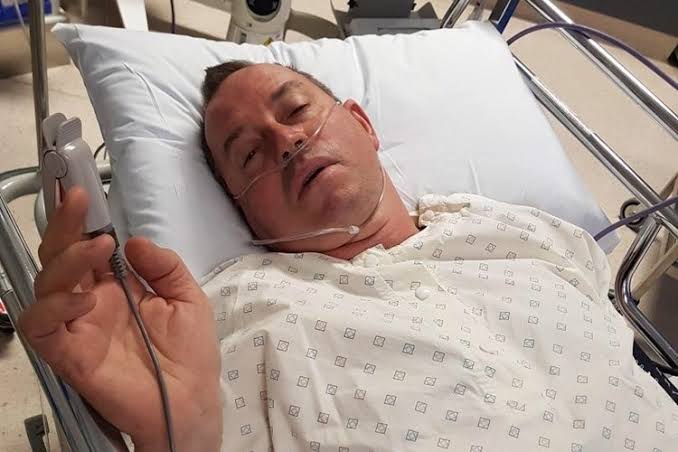October 29, 2023 – As the world observes World Stroke Day on October 29th, it serves as a poignant reminder of the importance of recognizing the signs of a stroke and taking prompt action. Strokes are a leading cause of disability and death worldwide, but with early intervention, their impact can be significantly reduced. In this article, we will delve into the causes of strokes and the critical signs to watch for, so you can be better prepared to respond when it matters most.
What is a Stroke?
A stroke, often referred to as a “brain attack,” occurs when there is a sudden disruption in the blood supply to the brain. This can happen in two main ways:
1. Ischemic Stroke: Approximately 85% of all strokes are ischemic strokes. They occur when a blood clot blocks a blood vessel in the brain, cutting off the blood supply to a specific region.
2. Hemorrhagic Stroke: These strokes occur when a blood vessel in the brain ruptures, leading to bleeding within the brain tissue.
To provide a clearer perspective on these distinctions, we turn to the insights of Dr. Ede Gregory, who explains, “Ischemic strokes are like roadblocks, where a clot obstructs the blood flow, while hemorrhagic strokes are akin to a burst pipeline, where bleeding inside the brain damages surrounding tissues.”
Causes of Strokes
Several factors can increase the risk of having a stroke:
1. High Blood Pressure: Hypertension is the most significant risk factor for strokes. It damages blood vessels over time, making them more susceptible to clots or ruptures.
Dr. Gregory emphasizes this point, stating, “Uncontrolled high blood pressure is a ticking time bomb when it comes to strokes. Regular blood pressure monitoring and effective management are key to stroke prevention.”
2. Smoking: Smoking not only damages the heart and blood vessels but also increases the formation of blood clots, raising stroke risk.
Dr. Gregory underscores the connection between smoking and strokes, saying, “Each cigarette paves the way for a potential stroke. Quitting smoking is one of the most impactful steps you can take to protect your brain.”
3. Diabetes: People with diabetes have a higher likelihood of developing health issues that can lead to strokes, such as atherosclerosis.
In the words of Dr. Gregory, “Diabetes is a silent contributor to stroke risk. It accelerates the hardening of arteries, creating a dangerous environment for clots to form.”
4. High Cholesterol: High levels of LDL cholesterol can contribute to the buildup of fatty deposits in arteries, increasing the risk of clot formation.
Dr. Gregory notes, “Cholesterol isn’t just about heart health; it plays a pivotal role in stroke prevention too. Managing your cholesterol levels can save you from both heart attacks and strokes.”
5. Obesity: Excess weight can contribute to other risk factors, such as diabetes and high blood pressure, making it a significant risk factor for strokes.
Dr. Gregory advises, “Losing weight through a healthy lifestyle can significantly reduce your stroke risk. It’s a journey to better overall health.”
6. Atrial Fibrillation: This heart rhythm disorder can lead to blood clots forming in the heart, which can then travel to the brain and cause a stroke.
Dr. Gregory explains, “Atrial fibrillation can turn the heart into a clot factory. Medications and lifestyle changes can help mitigate this risk.”
7. Family History: If close relatives have experienced strokes, it may indicate a genetic predisposition.
As Dr. Gregory clarifies, “Family history provides valuable insights, but it doesn’t write your destiny. Understanding your genetic risks empowers you to take proactive measures.”
Recognizing Stroke Signs
To act swiftly and seek medical help, it’s crucial to recognize the signs of a stroke. Remember the acronym FAST:
1. Face Drooping: Ask the person to smile. If one side of their face droops, it may be a sign of a stroke.
2. Arm or Leg Weakness: Ask the person to raise both arms. If one arm drifts downward or one leg is weak, this is another warning sign.
3. Speech Difficulty: Have the person repeat a simple sentence. Slurred speech or difficulty speaking can be indicative of a stroke.
4. Time to Call Emergency Services: If you notice any of these signs, call emergency services immediately. Time is critical when dealing with strokes, as quick treatment can minimize brain damage and improve the chances of recovery.
In the words of Dr. Gregory, “Recognizing these signs and acting promptly is like hitting the emergency brake on the fast track to disability. Every minute counts in stroke care.”
Strokes are medical emergencies that demand rapid action. Understanding the causes and recognizing the warning signs is crucial for both individuals at risk and those around them. By promoting awareness and encouraging a timely response, we can work together to reduce the impact of strokes and save lives. On this World Stroke Day, let us commit to spreading knowledge about strokes and taking the necessary steps to protect our loved ones and ourselves from this potentially devastating condition. As Dr. Gregory aptly concludes, “Prevention and swift response are our most potent weapons against the ravages of strokes. Let’s wield them wisely.”



